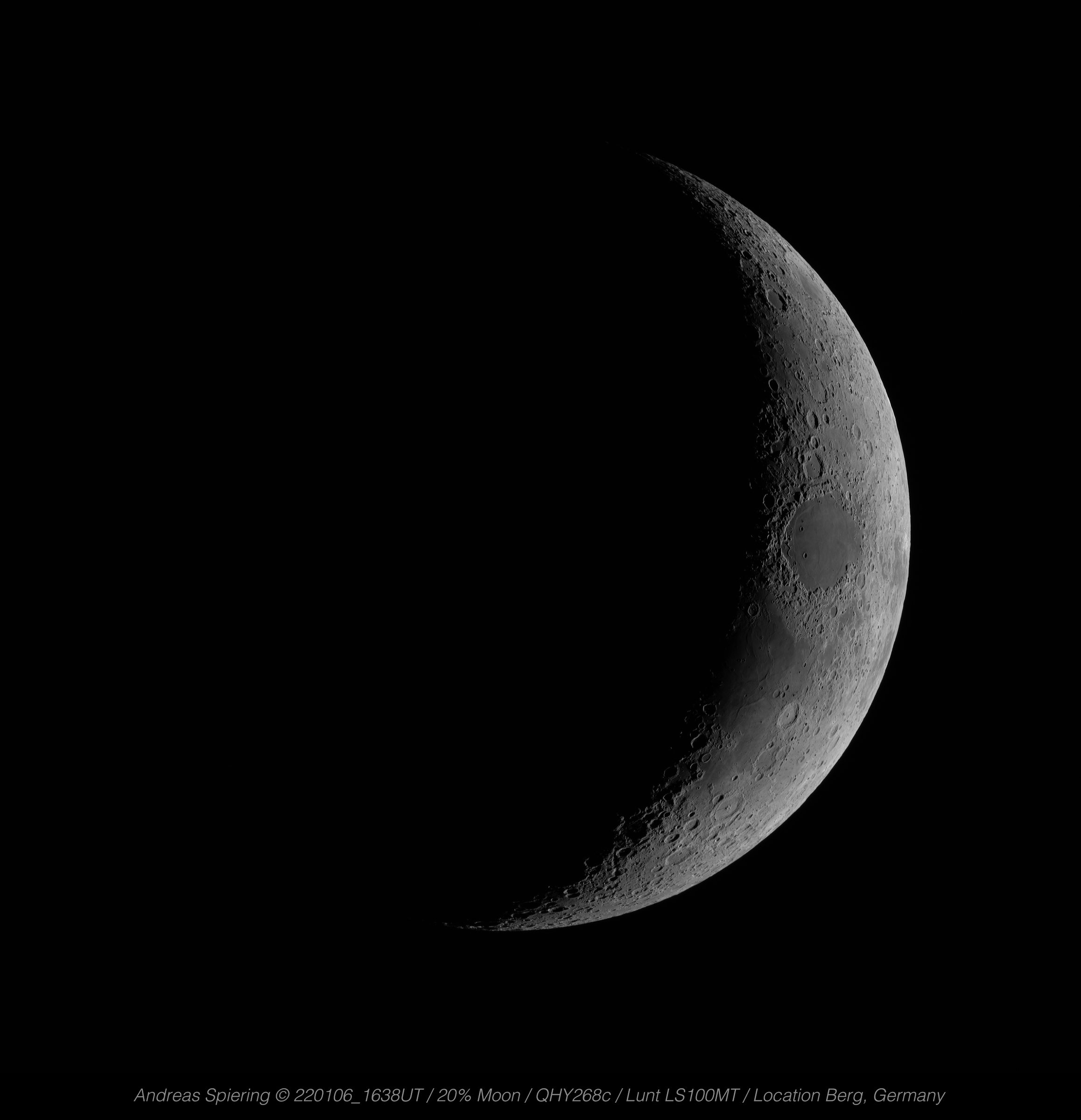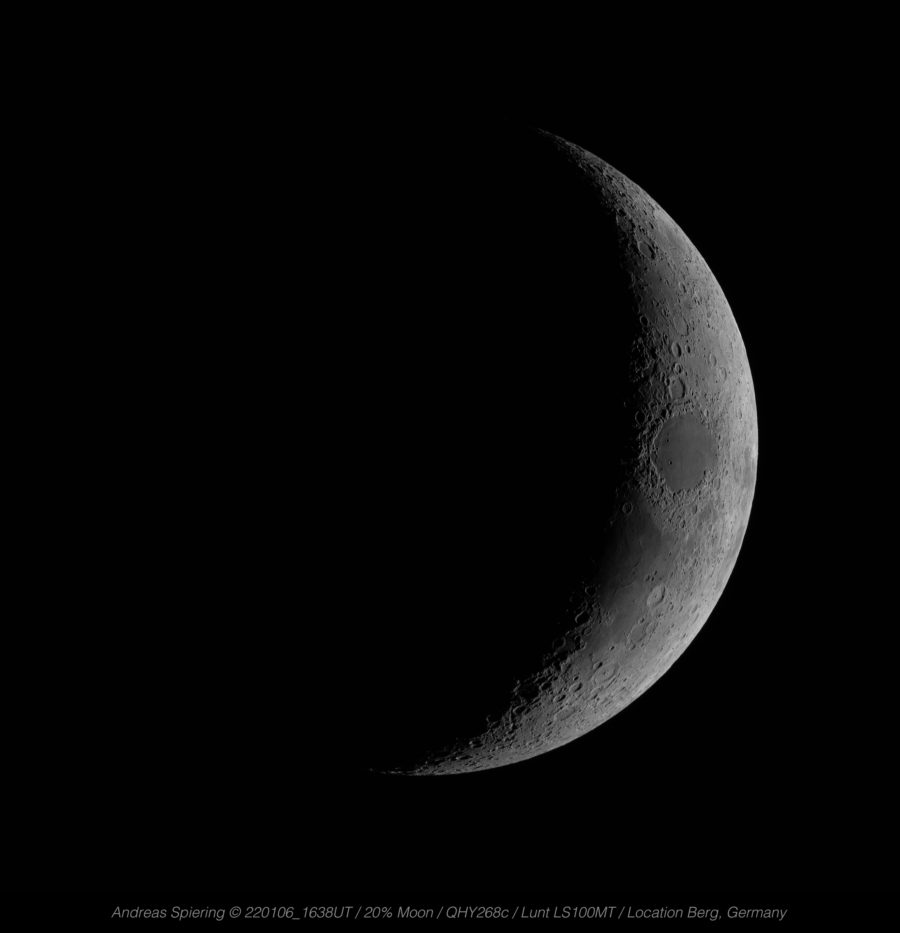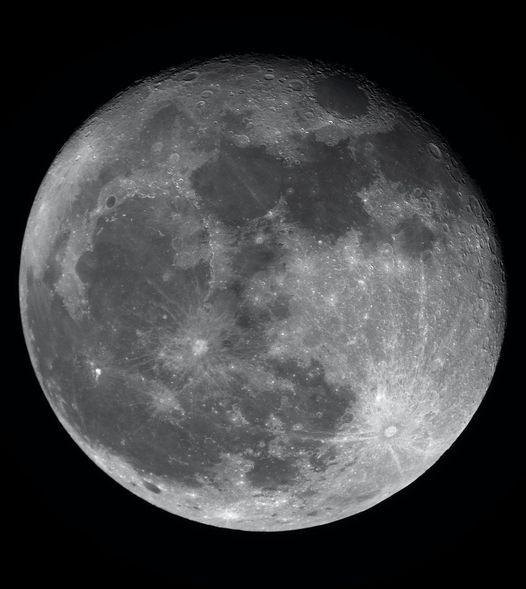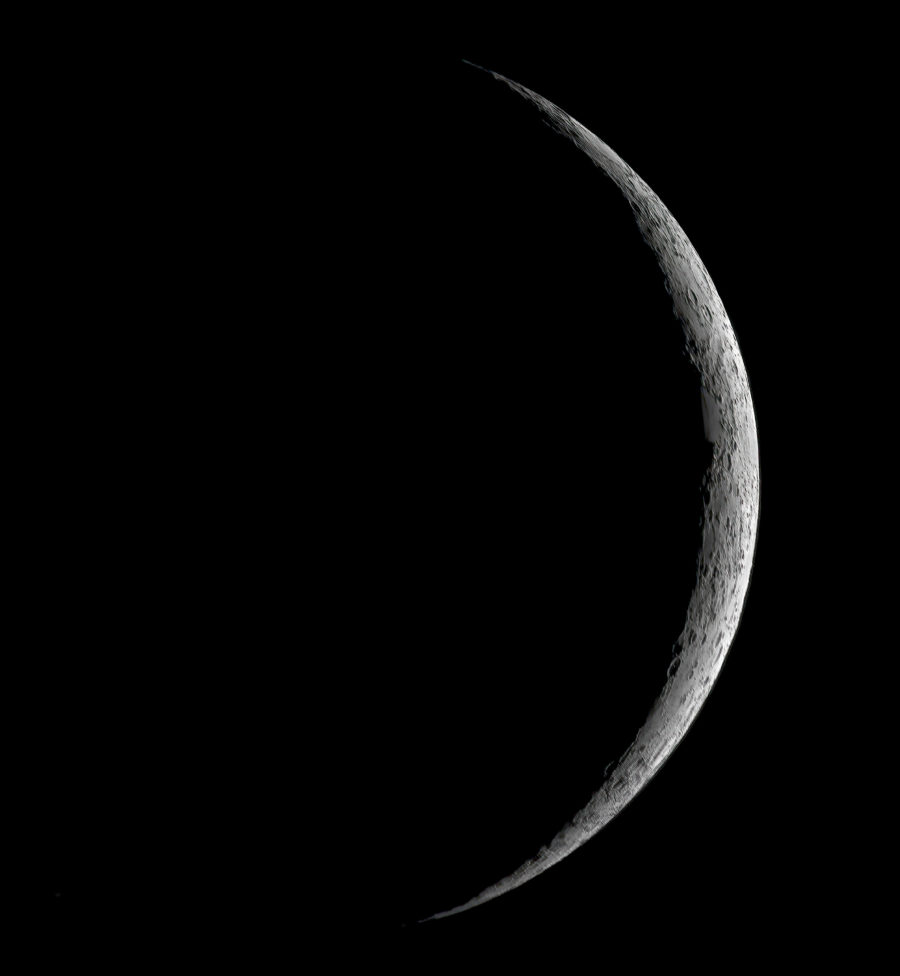
Viewing the Moon
View the Moon in breathtaking detail is with Lunt Universal Telescopes.
Lunt’s Universal Telescopes are designed to go from stellar Hydrogen-alpha solar viewing to awe-inspiring nighttime views with minimal changes of components.
Lunt Telescopes use professional-grade optics, comparable to those used in nighttime scopes produced by our top competitors. These high grade optics allow for better quality views across the wavelengths, making Lunt’s Universal day and night telescopes an easy choice over our competition. Lunt Universal Telescopes are simply the best way to do it all.
When using your Universal Telescope for nighttime viewing, your Lunt Blocking Filter and your Hydrogen Alpha Module will need to be removed, as these components are only used together for H-alpha solar viewing.
With the H-alpha Module removed, and your focuser re-installed, your telescope transforms into a standard refractor — but you will need a star diagonal before you start lunar roving! There are many different options of star diagonals to choose from, with many different components and purposes.
Take your star diagonal of choice, along with your favorite eyepiece, and place your star diagonal into the focuser of your telescope where the Lunt Blocking Filter was previously located. Now your Universal Telescope is in night mode.
Enjoy Moon Viewing



While there are many different accessories and options you might consider for your telescope, don’t forget to consider an appropriate mount or tripod!
Depending on which telescope you’re using, you may or may not need a mount on top of your tripod. Every mount and tripod has its own weight restrictions and configurations. If you start small, a simple camera or photography tripod that can handle the weight should suffice.
Many customers tend to choose a tripod and mount combination, which provides extra stability and functional movement. Additionally, many of these mounts are tracking capable — which can be handy when you start object tracking!
With Lunt telescopes, we will always provide you with a vixen dovetail for mounting purposes (with ring assembly or otherwise based on model selection). When choosing your mount be sure it is compatible with the dovetail you plan on using.
If you have a smart phone, find your favorite lunar map chart application or keep a physical chart handy as you view. If you do not have an eyepiece already, consider a zoom eyepiece as your starter eyepiece. This will give you a nice range to begin with, generally between 7-20mm. If you prefer a fixed eyepiece, there are many options. Generally, we recommend going as low as 5 to 6mm for general applications.
With your telescope setup, the weather and viewing conditions are also a vital consideration. Good seeing conditions, whether day or night, can make or break your viewing experience.
High atmosphere clouds, wind and turbulence all affect your viewing acuity. For night time, dark, cloudless skies are best, along with as much patience as you can muster! Your eye will take time to adjust once you get started, but you’ll be amazed once the light comes in!
Lunar craters, mountains and other features can be seen through any of Lunt’s Universal Telescopes, but of course with the larger scopes you’ll be able to see a lot more detail.
The amount of useful magnification available depends on the aperture size of the objective lens. While you can boost this higher using an eyepiece, you’ll usually get the best view by using magnifications no more than half of the maximum possible with your telescope.
Here’s a chart showing the maximum theoretical magnifications of Lunt’s Universal Telescopes:
| Model | Lunt 60mm | Lunt 80mm | Lunt 100mm | Lunt 130mm |
|---|---|---|---|---|
| Max theoretical magnification | 100X | 140X | 175X | 225X |
Required Equipment By Viewing Type
A telescope needs different equipment installed depending on what type of viewing you’re doing. Here’s a complete list of what you’ll need for your Lunt Universal Telescope:
| Viewing Type | Required | Recommended | Accessories |
|---|---|---|---|
| H-alpha | Lunt Universal Day & Night OTA | Sol Searcher (standard on some Lunt OTAs) | Lunt H-alpha Double Stack Module |
| Lunt H-alpha Module | Lunt Zoom Eyepiece | Lunt PC1: Computer Controlled Pressure Tuning | |
| Lunt Blocking Filter | Tracking Mount | Barlow Lens | |
| Standard Eyepiece | BinoViewer | ||
| Dovetail | |||
| Mount | |||
| CaK | Lunt Universal Day & Night OTA | Sol Searcher (standard on some Lunt OTAs) | Barlow Lens |
| Lunt CaK Rear Module | Lunt Zoom Eyepiece | BinoViewer | |
| Standard Eyepiece | Tracking Mount | ||
| Dovetail | |||
| Mount | |||
| White Light | Lunt Universal Day & Night OTA | Sol Searcher (standard on some Lunt OTAs) | Barlow Lens |
| Front Mount or Rear Mount White Light Filter or Wedge | Lunt Zoom Eyepiece | BinoViewer | |
| Polarizing Filter | Tracking Mount | ||
| Standard Star Diagonal (If using front mount filter) | |||
| Standard Eyepiece | |||
| Dovetail | |||
| Mount | |||
| Lunar, Planetary, Deep Space | Lunt Universal Day & Night OTA | Red Dot Finder | Coma Corrector (for larger OTAs) |
| Standard Star Diagonal | Go-To Mount | Light Pollution Filter | |
| Standard Eyepiece | Lunt Zoom Eyepiece | BinoViewer | |
| Dovetail | |||
| Mount | |||
| Terrestrial | Lunt Universal Day & Night OTA | Lunt Zoom Eyepiece | |
| Standard Image Erecting Diagonal (45 degree recommended) | BinoViewer | ||
| Standard Eyepiece | |||
| Dovetail | |||
| Manual Mount |
Lunt Front-Mounted DoubleStack Filters also can be added to standard refractor telescopes to enable you to use your nighttime scope as an H-alpha scope. You’ll need a an adapter to mount the unit to the objective, and a Lunt Blocking Filter.
For your safety: After nighttime viewing, be sure to set up your Universal Telescope with the required solar modules before viewing the Sun!
Moon Viewing Basics
Best times to view the Moon
While you might think the best time to view the Moon is when it’s full, actually the opposite is true. The best time is two to three days after the first quarter.
During this phase, nearly all the major lunar features are visible. The Moon isn’t so bright that you’ll lose detail due to glare. And, as the terminator (the line of darkness at the edge of view) recedes, features near the border pop into bold relief. The shadows grow stronger and you’ll see more details.
The full Moon appears almost flat, due to the Sun shining directly on it, and it can be painfully bright. The full Moon is 11 times brighter than the first quarter Moon.
Where on the Moon to look
Viewing the area near and along the terminator, where light comes from the side and mountains cast long shadows, reveals a lot of amazing details. Some of these mountain ranges are more than 20,000 feet high.
During the waxing gibbous phase, two or three days past first quarter, you’ll see the Copernicus crater on or next to the terminator.
Three or more days after first quarter, you’ll be able to see a system of rays surrounding this crater. Near the Moon’s lower limb you’ll see the crater Tycho, with an even more impressive system of rays.
Always different every time you look at it, and filled with fascinating features, viewing the Moon can bring you endless hours of enjoyment.